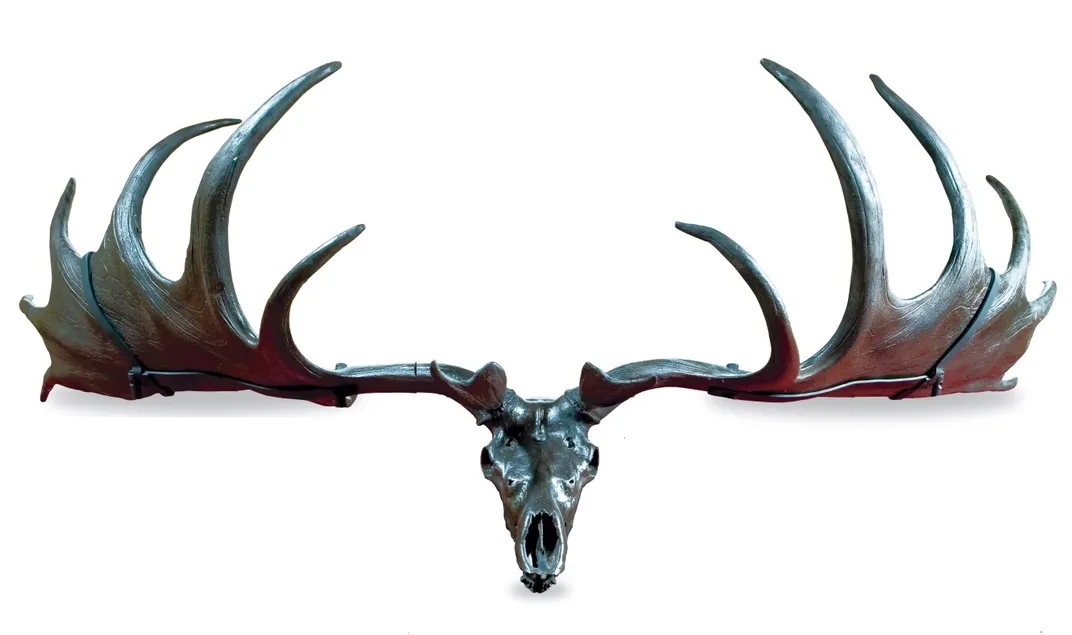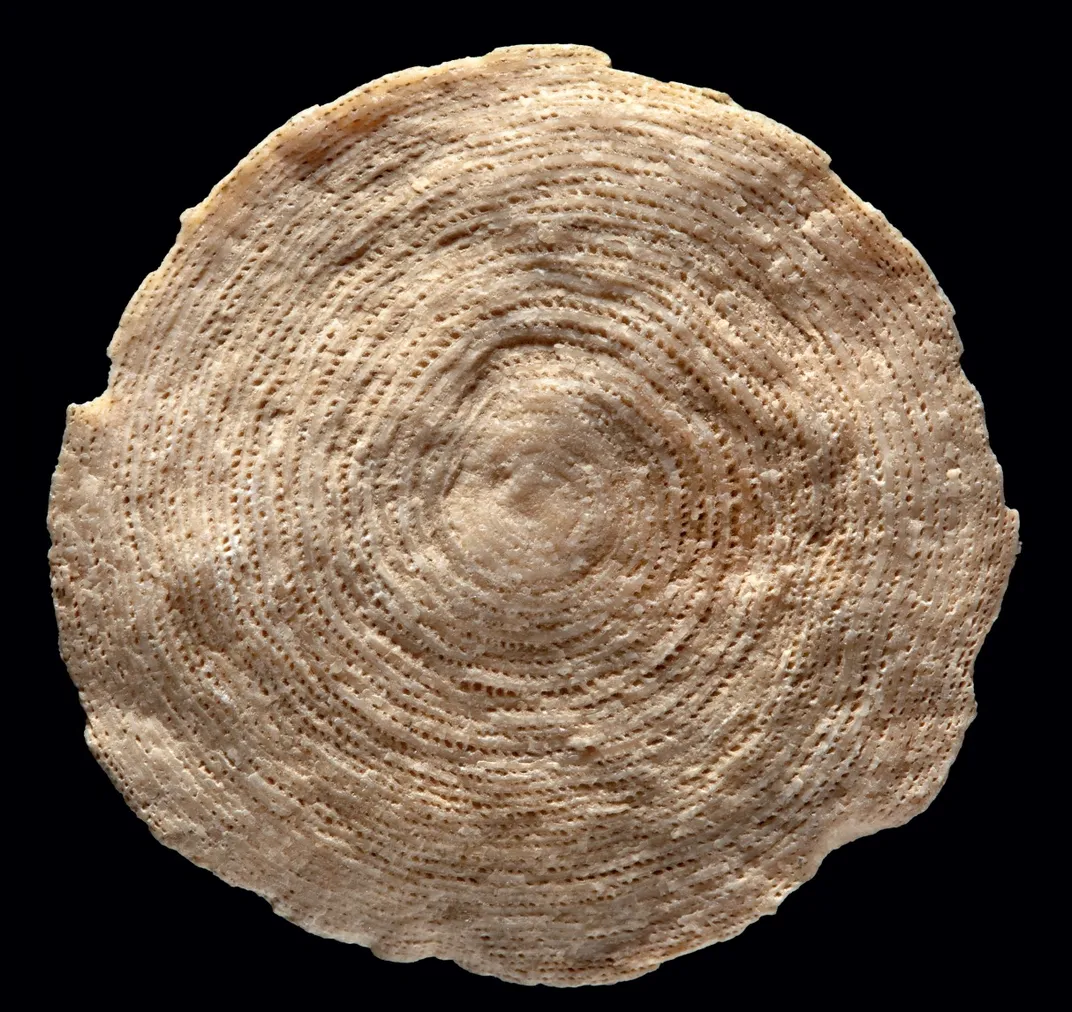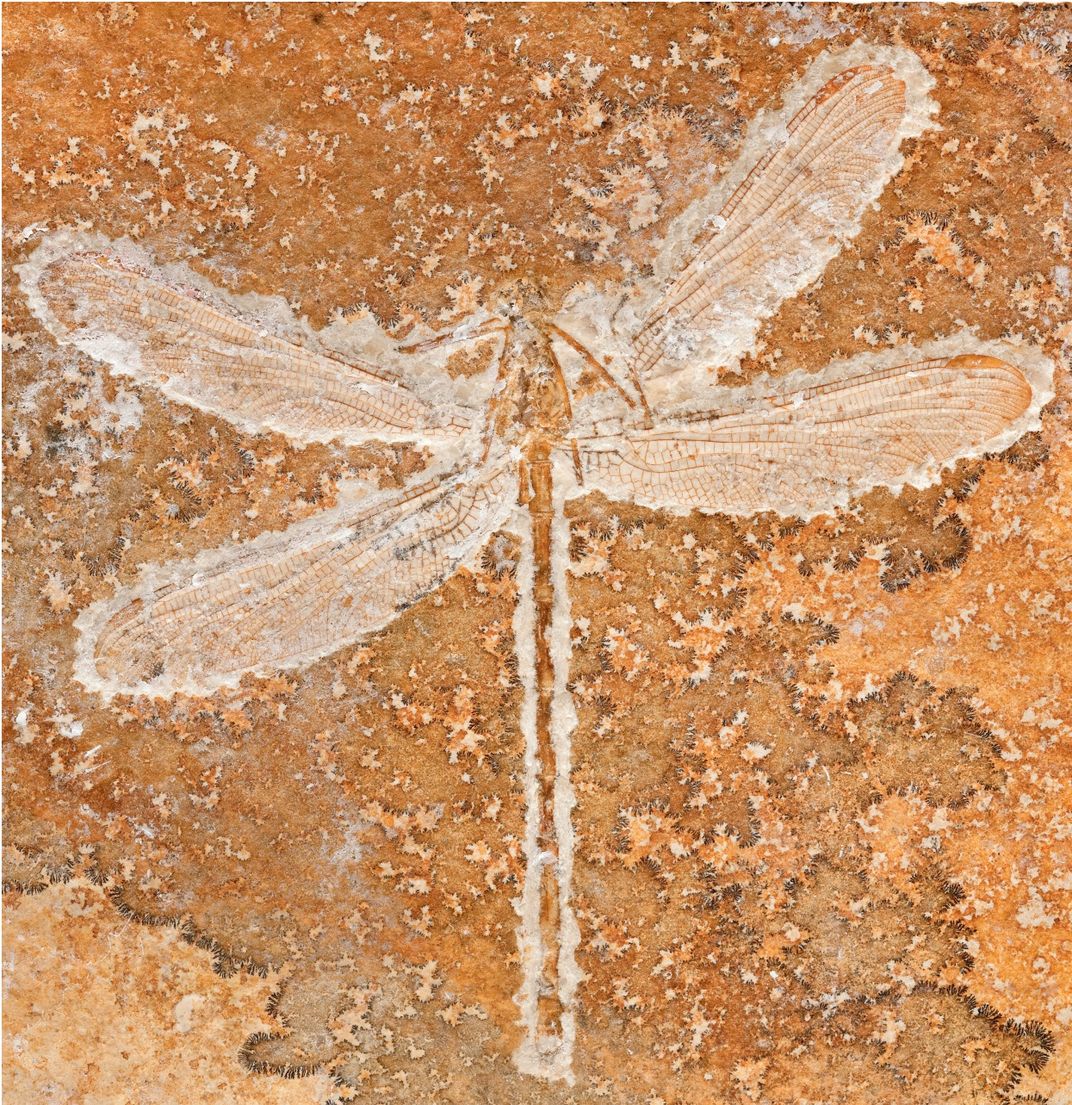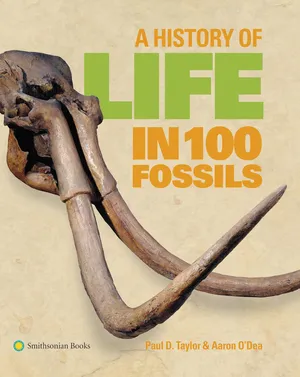Five Incredible Fossils From Across the World
Learn about Earth’s history with five fossils that have stories to tell
:focal(750x521:751x522)/https://tf-cmsv2-smithsonianmag-media.s3.amazonaws.com/filer_public/be/c3/bec313c6-bb90-4e28-b15d-a2d06e0e8eef/dimetrodon.jpg)
Natural History Museum, London
Fossils help illustrate the evolution of life on Earth. A History of Life in 100 Fossils presents some of the most notable fossils in the collections of the Natural History Museum, London and the Smithsonian's National Museum of Natural History, from the 3.5 billion-year-old cyanobacteria to the Stellar's sea cow driven to extinction in the late 18th century. Today, enjoy five fossils from around the world that represent important parts of Earth's history.
1. Steller's sea cow
/https://tf-cmsv2-smithsonianmag-media.s3.amazonaws.com/filer_public/63/2b/632bc661-1407-4f94-a783-94d5b2ffa117/stellers_sea_cow.jpg)
In 1741, captain vitus jonassen bering (1681–1741), an explorer and officer in the Russian Navy, on orders from Peter the Great, led an expedition to map the Alaskan coast. Bering’s ship became shipwrecked on what was to become Bering Island and Bering himself died there of scurvy. Half the crew, including German-born naturalist Georg Wilhelm Steller (1709–1746), survived thanks to the discovery of an extremely large sea cow. Th e meat from these animals sustained the crew, and they were able to build a small ship from the wreckage and return to Russia. During the return voyage Steller devoted himself to documenting the animals and plants they had discovered. The sea cow was of particular interest, not least because without it, he and the remaining crew would have perished. Up to 8 metres (26 feet 3 inches) in length and 10 tonnes (11 tons) in weight the beast was considerably bigger than the any of the manatees and dugongs previously seen.
All sea cows are members of the order Sirenia – marine mammals more closely related to elephants than cows. Described by Steller as having thick black skin ‘like unto the bark of an ancient oak’, a small head, stubby forelimbs and a whale-like fl uke, Hydrodamalis gigas was observed to float on the water surface, scraping away at kelp, its principal source of food. Once back in Russia the virtues of the sea cow’s meat, milk and hide (useful for repairing boats) were quickly communicated by the returning crew, and sea otter fur-trading expeditions armed with harpoons were instructed to make use of this convenient depot en route. The sea cows were found to be naturally docile and they were easily hunted, providing a wealth of food and profit for the hunters travelling the inhospitable Bering Sea. The sea cows were also famously monogamous. A wretched story told by Steller himself recounts how when one cow was hunted the bull not only tried to save his partner by butting the boat and trying to remove the harpoons, but remained close to the corpse for a day and even the entrails for another two days. Subsequent hunters were unmoved by these touching displays and within 27 years of being described by Steller, H. gigas was driven to extinction.
The fossil record reveals a deeper and perhaps darker history. Fossils of H. gigas have been discovered from Japan to Mexico, demonstrating that the animal once wallowed in the vast kelp beds around the entire north Pacific Rim. The small populations discovered by Steller must have been the last remnants of a once much larger and healthier population, and it is likely that aboriginal hunting had already reduced them to near extinction levels before the final blow that came from the Western hunters. The virtues of H. gigas clearly preceded Bering’s expedition. Although the living close relatives of Hydrodamalis are rarely hunted today, all four of the much smaller manatees and dugongs are still under threat of extinction themselves.
2. Megaloceros

No modern deer boasts antlers more magnificent than those of the extinct giant deer Megaloceros giganteus, or ‘Irish elk’ as it is often misnamed. The antlers of this relative of fallow deer had a span of up to 3.5 metres (11 feet 6 inches). Many mounted examples are to be seen not only in museums but also adorning the walls of stately homes, together with the far punier antlers of modern species of deer. The living deer probably stood about 2 metres (6 feet 6 inches) high at the shoulders. This species of giant deer lived between about 400,000 and 8,000 years ago and could be found from Ireland in the west to central Siberia in the east.
The reason for its extinction is nowadays usually blamed on climatic change, hunting by humans or a combination of the two. However, these theories have not always prevailed. At one time, the extinction of M. giganteus was considered to be the natural end product of orthogenesis (‘directional evolution’). Briefly in vogue during the late nineteenth and early twentieth centuries, orthogenesis was a theory that explained evolutionary change in terms of internal ‘compulsions’ driving evolution along predefined pathways. Once particular features had evolved, they were apt to become more extreme with time, eventually becoming so disadvantageous that the species possessing them was driven to extinction. The huge antlers of M. giganteus seemed to fit this idea particularly well, appearing to be so hefty that the deer would have great difficulty holding its head up, the antlers becoming mired in the boggy ground over which the animal roamed or entangled in the branches of trees.
While orthogenesis has been thoroughly discredited as an evolutionary theory, the question still remains as to why the antlers were so large in M. giganteus. What function might they have served? Only the males (stags) of the species grew antlers, leading to the conclusion that the antlers are a product of sexual selection. Dominant males (with larger antlers) are more likely to mate with females and pass their genes to the next generation. In fact, the size of the antlers in M. giganteus are not particularly oversized when the large size of the body as a whole is taken into account, and it seems likely that they were used for display purposes and ritualized combat between males, only occasionally leading to serious fighting and injury. The huge antlers of male individuals of M. giganteus may not have been as maladaptive as formerly assumed.
Some scientists now believe that problems faced by females of the species led to the extinction of M. giganteus. Climatic change at the end of the Pleistocene is thought to have shortened the growing season of the plants consumed by M. giganteus, lessening the period when they could be digested and placing critical nutritional stress on pregnant and lactating females.
3. Nummulites

When the greek geographer Strabo (63 BC to around AD 24) visited the Pyramids of Giza in Egypt, these wonders of the ancient world were already 2,500 years old. Strabo was duly impressed by the huge size of the pyramids, but also remarked on the lentil-like structures contained in the stones from which the pyramids were constructed. He was told that these were remnants of the workers’ food turned to stone – an origin Strabo wisely regarded as improbable. We now know that the ‘slaves’ lentils’ are fossils belonging to animals called nummulites that flourished in a warm shallow sea covering this part of Egypt about 40 million years ago. The name ‘nummulite’ alludes to the fact that larger specimens strongly resemble coins. Indeed, in folklore in Egypt they are referred to as ‘angels’ money’.
The simple single-celled structure of nummulites contrasts with their intricate skeleton, forming a series of spiral, overlapping whorls, with each whorl being subdivided into numerous tiny chambers. Nummulites may reach 10 centimeters (4 inches) in diameter, but, remarkably, they are the fossils of single-celled animals closely related to amoebae. Why did they grow so large? There is good reason to believe that, like their modern relatives, the nummulites found at Giza were hosts in a symbiotic relationship with another, smaller organism. In the case of species living today, these symbionts are tiny singled-celled algae called diatoms, golden brown in colour. The shells of nummulites are relatively transparent, and their flat shape provides a large surface area for the light required by the diatoms to photosynthesize effectively. For reasons that are still being debated by scientists, the presence of plant symbionts in animals living in the sea promotes the growth of calcareous skeletons in the host animals. Thus, the gigantic size of the nummulites at Giza was probably due to the intimate relationship they developed with symbiotic diatoms.
Their great utility in dating rocks, especially across the oil-rich states of the Middle East, means that nummulites have been intensively studied by palaeontologists. Species of nummulite evolved rapidly, and consequently their fossils change from one layer of sediments to the next. Furthermore, nummulite fossils are often present in prodigious quantities. The limestone used for the pyramids is so packed with them that, as at Giza, it is known as a nummulitic limestone. One of the fascinating facts about such nummulitic limestones is that they very often contain nummulites of two different sizes – the smaller ‘slaves’ lentils’ and the larger ‘angels’ money’. These are not different species but rather distinct stages in the life cycle of a single species.
4. Dragonflies

Insects have a very incomplete fossil record because they lack mineralized hard parts. Even so, an increasing number of fossil deposits are being found containing exceptionally preserved insects. These include not only amber but also fine-grained sediments that accumulated in shallow, tranquil freshwater lakes and marine lagoons. Among the latter is the famous Solnhofen Limestone of Bavaria, Germany, from which the magnificent dragonfly shown here was collected.
The Jurassic Solnhofen Limestone is a lithographic stone. Lithographic refers to the fact that this is a fissile stone able to be split along bedding planes with very flat surfaces ideal for applying ink for printing. The same bedding planes frequently expose the compressed remains of Jurassic animals. More than 50 species of dragonfly alone have been described from the Solnhofen Limestone, and this deposit is also the source of Archaeopteryx and numerous other exceptional fossils, including horseshoe crabs, fishes and pterosaurs. It is believed that both flying and aquatic animals sank to their death in the saline Solnhofen lagoon, the bottom waters of which lacked oxygen. Without oxygen, no animals could live on the bottom of the lagoon, and the limey mud that was accumulating in the lagoon quickly enveloped the corpses.
Dragonflies are primitive flying insects with two pairs of lacy wings. They are predators of smaller insects and usually live in wet environments, as their larvae are aquatic and develop in freshwater. The fossil record of dragonflies can be traced back to the Carboniferous, about 325 million years ago. Some Carboniferous and Permian griffenflies (the group from which today’s dragonflies and damselflies are derived) grew to an enormous size: Meganeura, with a wingspan of almost 70 centimeters (27½ inches) would have dwarfed the largest dragonfly living today, which has a wingspan of a mere 15 centimeters (6 inches).
The existence of insects as large as Meganeura poses a major challenge. Insect respiration involves the passive diffusion of gases through a branching network of tubes called trachea. As insects become bigger, so the distance from the surface to the deepest parts of the tracheal system increases, making it more difficult for oxygen to reach these parts. In theory, this should limit the maximum size an insect can reach. Some scientists believe that the dragonflies of the Carboniferous could only grow to their gigantic size because of the higher atmospheric oxygen levels at the time – around 35% according to geochemical evidence. By contrast, today’s atmosphere contains about 21% oxygen. With such a high concentration of oxygen in the atmosphere it may well have been possible for insects to grow much larger than they can today.
5. Dimetrodon
/https://tf-cmsv2-smithsonianmag-media.s3.amazonaws.com/filer_public/be/c3/bec313c6-bb90-4e28-b15d-a2d06e0e8eef/dimetrodon.jpg)
Natural History Museum, London
Any youngster interested in palaeontology will tell you that contrary to its appearance Dimetrodon was not in fact a dinosaur but lived 50 million years before the first dinosaurs appeared. Dimetrodon wasn’t even an ancestor of dinosaurs but was closely related to the therapsids, the branch of land vertebrates that included the precursors of all mammals.
This beast must nonetheless have been a fearsome top predator. This 275-million-year-old Dimetrodon grandis was 5 metres (16 feet 5 inches) long and had a jaw lined with formidable rows of serrated teeth and piercing canines near the front. It had a powerful tail, sturdy, muscular legs and a powerful bite that would have efficiently killed, cut and consumed its prey. This level of proficiency had become necessary because by the time Dimetrodon had become top predator, its principal prey, such as large amphibians and fish, had themselves become agile escape artists. For all its terrifying appearance, the most striking features of Dimetrodon are the greatly elongated spines on the vertebrae. What was the purpose of this sail-like structure along its back? Early palaeontologists suggested that the sail may have provided camouflage in long reeds, given strength to the backbone, or even caught the wind like a true sail and pushed the animal through water!
Another much examined explanation is that the sail was used by Dimetrodon to regulate its body temperature. Undeniably, a cold-blooded animal of such large size would have taken a long time to heat up to optimal temperature simply by basking like a lizard. Its smaller prey would certainly have had the advantage. To speed up the process Dimetrodon could have turned its sail to face the sun, heating the circulating blood and hence the whole body. Likewise, the sail could have played a role in cooling the animal down and preventing overheating. It is an appealing theory but of the twelve or so named Dimetrodon species, most are much smaller than the arresting Dimetrodon grandis and would not have required anything like the level of thermoregulation needed by this large monster, yet they too have welldeveloped sails. What’s more, estimates suggest that it may have taken up to 4 hours for Dimetrodon grandis to heat up using the sail method, making the sail’s usefulness as a thermoregulator somewhat suspicious. Another group of palaeontologists argue that the sail was instead a brightly coloured ornament used to attract mates or perhaps to intimidate rivals. The larger and more flamboyant the sail the greater chance of successfully mating, thus leading to the ‘sexual selection’ of larger and ever more ostentatious sails. The truth is likely to be a fusion of both theories, as such multitasking is a common theme in evolution. The vibrant but slightly ludicrous beak of the toucan is used to attract mates, and yet it also functions well to pick fruit and snatch chicks from other’s nests and to regulate body temperature.
A History of Life in 100 Fossils is available from Smithsonian Books. Visit Smithsonian Books’ website to learn more about its publications and a full list of titles.
Excerpt from © 2014 by The Trustees of the Natural History Museum, London

